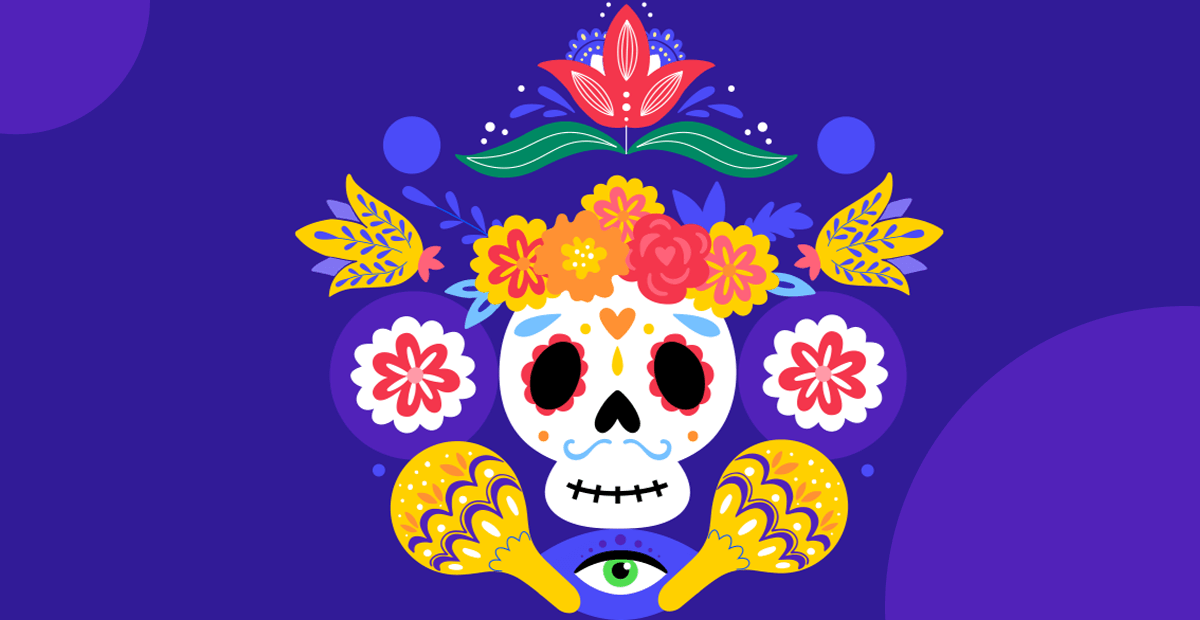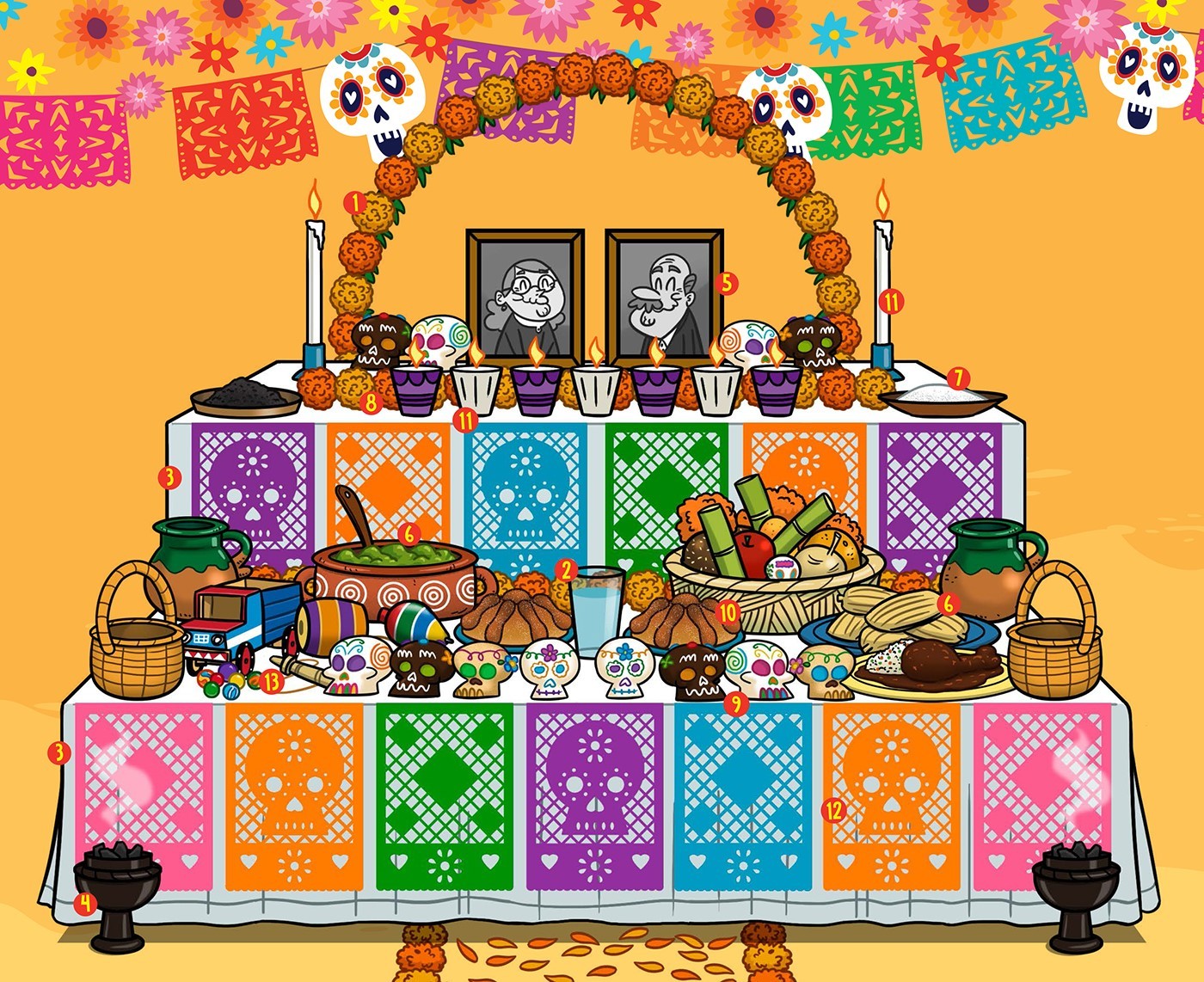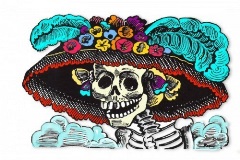Celebrating Dia de los Muertos

Dia de los Muertos—or in English, the Day of the Dead—is celebrated on November 1 and 2. This is a tradition that has lived on for centuries. For Mexicans, this is a unique and interesting way to face death and remember the deceased.
Mexico is colorful, exuberant, and lots of fun: the people, the food, and the celebrations are bright and second to none. So, when it comes to death, Mexicans celebrate with color, food, and music—in true Mexican style.
El dia de Muertos is a beautiful celebration filled with color, flowers, food and music. During this two-day celebration, it is believed that the passageway between the real world and the spirit world is open, so deceased loved ones can come back to us. It is said that on November 1, the children who have passed come back to visit us, and on November 2 it’s the adults who return.
This tradition dates back over 3,000 years, with the Aztecs being the first ones to celebrate Dia de Muertos. Dia de Muertos is a combination of the Aztec festival dedicated to the goddess Mictecacihuatl (the “lady of the dead”), with the Catholic influence. The church rejected the Aztecs’ beliefs and turned it into All Saints' Day and All Souls' Day, making it into two days that fall on the Catholic calendar. Mexicans have since transformed it into a unique holiday that they celebrate every year.

How Dia de Muertos is Celebrated
Families will gather during the night at the cemeteries (panteons), light candles, and place flowers on the burial sites of their lost loved ones. There is festive music and definitely no crying or grieving. This is a reflective and lively get-together to welcome the deceased back to celebrate life and enjoy all human things again.
We build altars (ofrendas) that are beautifully decorated, with food, drinks, photos, and marigolds (cempasuchil). The marigolds are thought to guide spirits back with their bright color and pungent smell.
Ofrendas are also decorated with calaveras (skulls), which were used during rituals in the Aztec era and passed on as trophies during battle. Today, small sugar skulls are placed on the altars, but there is nothing grim about them—they’re decorated with colorful paint, glitter, and beads. Papel picado (perforated paper), candles, and pan de muerto (sweet bread) are also seen on ofrendas during Dia de Muertos.
La Catrina is a major part of Dia de Muertos as well. One of the strongest and most recognizable symbols of Dia de Muertos, La Catrina is a tall female skeleton wearing a fancy hat with feathers.

Artist and political cartoonist Jose Guadalupe Posada brought this skeleton to life in the early 1900s because some Mexicans wanted to look like wealthy and aristocratic Europeans at that time.
La Catrina was a satirical drawing to remind people to stop trying to be something they weren’t—no matter how rich or poor you were, or what society you belonged to, you would all end up skeletons. La Catrina is now a strong symbol for various Dia de Muertos activities.
Dia de Muertos is a rare holiday that encourages the celebration of both life and death and enables people to exchange mourning for happiness. Dia de Muertos is celebrated not only in Mexico, but also in other Latin countries like Columbia, Ecuador, Honduras, El Salvador, Venezuela, and others. Traditions vary among countries, but the basic idea is the same: it’s a day to celebrate, remember the dead, and get together with family.

